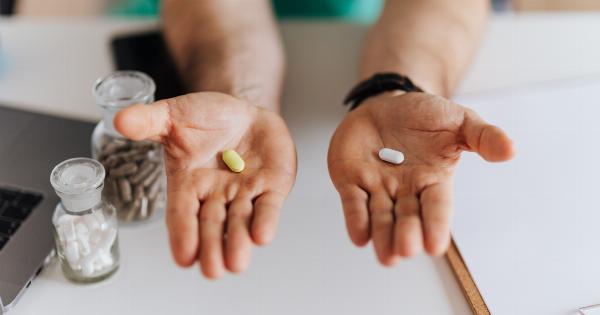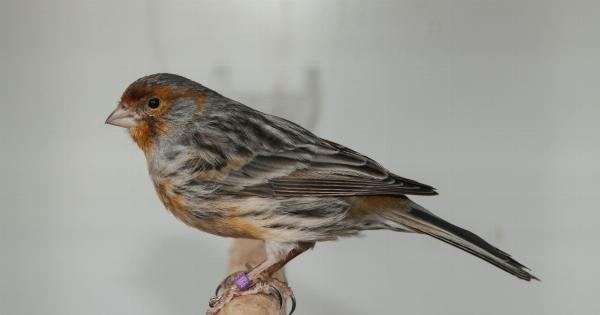Glaucoma is a progressive eye disease that can lead to permanent vision loss if left untreated. It occurs when there is a buildup of pressure within the eye, damaging the optic nerve.
While there is no cure for glaucoma, there are several drugs available that can help lower the risk of developing the disease or slow its progression. Below are 30 commonly used drugs that are prescribed for the prevention and treatment of glaucoma:.
1. Prostaglandin Analogues
Prostaglandin analogues are a type of medication that works by increasing the outflow of fluid from the eye, reducing intraocular pressure. Common examples include latanoprost, bimatoprost, and travoprost.
2. Beta-Blockers
Beta-blockers lower intraocular pressure by reducing the production of fluid in the eye. Timolol and betaxolol are commonly prescribed beta-blocker eye drops for glaucoma treatment.
3. Alpha-Adrenergic Agonists
Alpha-adrenergic agonists work by decreasing the production of fluid and increasing its outflow from the eye. Brimonidine and apraclonidine are commonly used alpha-adrenergic agonists for glaucoma management.
4. Carbonic Anhydrase Inhibitors
Carbonic anhydrase inhibitors reduce fluid production in the eye to lower intraocular pressure. These drugs are available as eye drops (e.g., dorzolamide, brinzolamide) or oral tablets (e.g., acetazolamide, methazolamide).
5. Miotics
Miotics work by constricting the pupil and increasing the outflow of fluid from the eye. Pilocarpine and carbachol are commonly prescribed miotics for glaucoma treatment.
6. Rho-Kinase Inhibitors
Rho-kinase inhibitors, such as netarsudil, lower intraocular pressure by relaxing the muscles in the eye’s trabecular meshwork. They are often used in combination with other glaucoma medications.
7. Cholinergic Agonists
Cholinergic agonists increase the outflow of fluid from the eye and reduce intraocular pressure. Carbachol, echothiophate iodide, and pilocarpine are commonly used cholinergic agonists.
8. Adrenergic Agonists
Adrenergic agonists reduce fluid production in the eye and increase its outflow. Examples include apraclonidine, brimonidine, and dipivefrin.
9. Nonsteroidal Anti-Inflammatory Drugs (NSAIDs)
NSAIDs have both anti-inflammatory and intraocular pressure-lowering effects. Ketorolac and bromfenac are examples of NSAIDs used in glaucoma treatment.
10. Combination Medications
Combination medications for glaucoma management contain multiple active ingredients to effectively lower intraocular pressure. Examples include fixed-dose combinations of a prostaglandin analogue with a beta-blocker or an alpha-adrenergic agonist.
11. Brinzolamide
Brinzolamide, available as an eye drop, is a carbonic anhydrase inhibitor that reduces fluid production in the eye.
12. Apraclonidine
Apraclonidine is an alpha-adrenergic agonist that reduces fluid production and increases its outflow to lower intraocular pressure.
13. Methazolamide
Methazolamide is an oral carbonic anhydrase inhibitor that decreases fluid production in the eye and effectively lowers intraocular pressure.
14. Dorzolamide
Dorzolamide, available as an eye drop, is a carbonic anhydrase inhibitor that reduces fluid production in the eye.
15. Timolol
Timolol is a beta-blocker that lowers intraocular pressure by reducing fluid production in the eye.
16. Ketorolac
Ketorolac, available as an eye drop, is a nonsteroidal anti-inflammatory drug that helps reduce intraocular pressure and has anti-inflammatory effects.
17. Latanoprost
Latanoprost is a prostaglandin analogue that increases outflow of fluid from the eye, effectively lowering intraocular pressure.
18. Bimatoprost
Bimatoprost is a prostaglandin analogue that reduces intraocular pressure by increasing fluid outflow from the eye.
19. Travoprost
Travoprost is a prostaglandin analogue that helps lower intraocular pressure by increasing fluid drainage from the eye.
20. Bevacizumab
Bevacizumab, also known as Avastin, is a medication used off-label to treat conditions associated with abnormal blood vessel growth in the eye, such as neovascular glaucoma.
21. Betaxolol
Betaxolol is a beta-blocker that reduces intraocular pressure by decreasing fluid production in the eye.
22. Pilocarpine
Pilocarpine is a miotic that constricts the pupil and increases fluid outflow from the eye, effectively reducing intraocular pressure.
23. Acetazolamide
Acetazolamide is an oral carbonic anhydrase inhibitor that reduces fluid production and intraocular pressure.
24. Carbachol
Carbachol is a cholinergic agonist that increases fluid outflow from the eye and lowers intraocular pressure.
25. Echothiophate Iodide
Echothiophate iodide is a cholinergic agonist used topically to reduce intraocular pressure by increasing fluid outflow.
26. Dorzolamide/Timolol
Dorzolamide/timolol is a combination medication that contains both a carbonic anhydrase inhibitor (dorzolamide) and a beta-blocker (timolol) to effectively lower intraocular pressure with one single eye drop.
27. Brimonidine/Timolol
Brimonidine/timolol is a combination medication that combines an alpha-adrenergic agonist (brimonidine) and a beta-blocker (timolol) to reduce fluid production and increase fluid outflow, effectively reducing intraocular pressure.
28. Dorzolamide/Brinzolamide
Dorzolamide/brinzolamide is a combination medication of two carbonic anhydrase inhibitors that work together to reduce fluid production in the eye and lower intraocular pressure.
29. Travoprost/Timolol
Travoprost/timolol is a combination medication that combines a prostaglandin analogue (travoprost) and a beta-blocker (timolol) to increase fluid drainage and decrease fluid production in the eye, effectively lowering intraocular pressure.
30. Dorzolamide/Timolol/Brinzolamide
Dorzolamide/timolol/brinzolamide is a combination medication that includes all three classes of drugs: carbonic anhydrase inhibitor (dorzolamide), beta-blocker (timolol), and carbonic anhydrase inhibitor (brinzolamide).
This powerful combination helps reduce fluid production and increase fluid outflow, effectively lowering intraocular pressure.





























